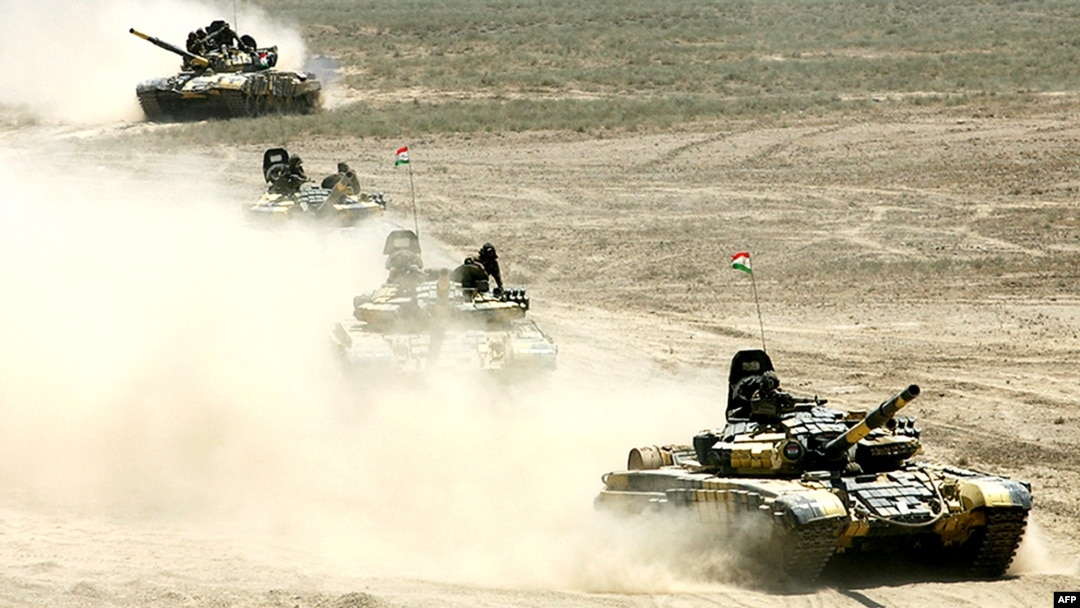There has been fierce fighting in northern Afghanistan for much of this year, and at times it has moved very close to the border with Central Asia. This has prompted great concern among the governments of Central Asia, particularly those directly bordering Afghanistan, and their unease increases with the knowledge that militants from Central Asia's domestic terrorist group -- the Islamic Movement of Uzbekistan (IMU) -- are among the enemy forces battling Afghan troops.
Some of the most vicious fighting has taken place in the Afghan provinces of Badakhshan and Kunduz, both of which border Tajikistan. This has led to speculation that if Afghanistan's problems cross into any Central Asian country it will be Tajikistan, with its mainly mountainous, 1,206-kilometer border with Afghanistan that faces the greatest threat of "spillover."
That risk to Tajikistan of Afghan spillover is probably not great, but it is real. Fortunately for Tajikistan, the three great world powers -- China, Russia, and the United States -- are taking this threat to Tajikistan very seriously, and their combined efforts arguably make Tajikistan the Central Asian state least likely to experience serious difficulties emanating from Afghanistan.
The latest example was July 8, when the United States handed over some 80 all-terrain vehicles to Tajik security forces for use in patrolling remote, mountainous areas of the border with Afghanistan. The United States has been helping Tajikistan bolster its watch on the Afghan border for more than a decade by funding the construction of barracks for border guards and providing new uniforms and other nonlethal military equipment, of which the vehicles were only the latest contribution.
The United States was more generous toward Uzbekistan, sending that Central Asian country more than 300 mine-resistant armor-protected vehicles. The United States has already said it will provide unspecified military aid to Turkmenistan.
But it is Russia that has been making the largest contributions to Tajikistan's security.
Russian forces have been in Tajikistan since the 1890s. Russia's 201st Motor Rifle Division has been deployed in Tajikistan since the end of World War II, but the Russian military recently announced it was increasing the unit's strength from some 7,500 troops to 9,000.
Russia has also been rearming the 201st with state-of-the-art weapons, including advanced warplanes, attack helicopters, and unmanned drones. In 2012, Russia extended the lease on the three bases it uses in Tajikistan by 49 years.
The Russian military has been in increasingly close contact with its Tajik counterpart and has helped establish a three-layer-deep defense along the Afghan border. Any intruders who elude the Tajik border guards and their advisers from Russia's Federal Security Service (FSB) must then contend with two more lines of defense, and any of these troops would be able to call in warplanes from Russian bases inside Tajikistan for support.
The Russian-led Collective Security Treaty Organization (CSTO) has also been helping Tajikistan strengthen its border defenses; it regularly reminds Tajik authorities the CSTO stands ready to send troops if needed and can assemble a fighting force near the Afghan border within 72 hours.
Meanwhile, China has become the leading investor into the Central Asian states in recent years, and Tajikistan is no exception. China has also been helping Tajikistan's security forces for more than a decade, providing vehicles, uniforms, and military equipment.
During the past year, Chinese counternarcotics agents have also been participating in joint operations with their Tajik counterparts on Tajik territory. Those operations have led to seizures along the border of Afghanistan in the Ishkashim district of Tajikistan's eastern Gorno-Badakhshan region. Tajikistan, Afghanistan, and China all meet in this part of world, but the Ishkashim district is located more than 200 kilometers west of the Chinese border.
All three of the big powers also provide training and conduct joint exercises with Tajik military and security forces.
That sort of combined focus from China, Russia, and the United States is absent in the other Central Asian states bordering Afghanistan: Uzbekistan and Turkmenistan.
Turkmenistan, in particular, has resisted practically any outside help, and now it faces the greatest threat of all the Central Asian states from Afghan spillover. Cross-border raiders have killed at least six Turkmen soldiers in the Afghan border area since February 2014.
With Beijing, Moscow, and Washington working to ensure Tajikistan's security along the border with Afghanistan, there is little chance of anything more than temporary breaches of security.
However, the three cannot do much to guarantee Tajikistan's internal security. The Tajik government's recent moves to control the practice of Islam inside the country and marginalize opposition groups and figures are the real threat to stability in Tajikistan.


